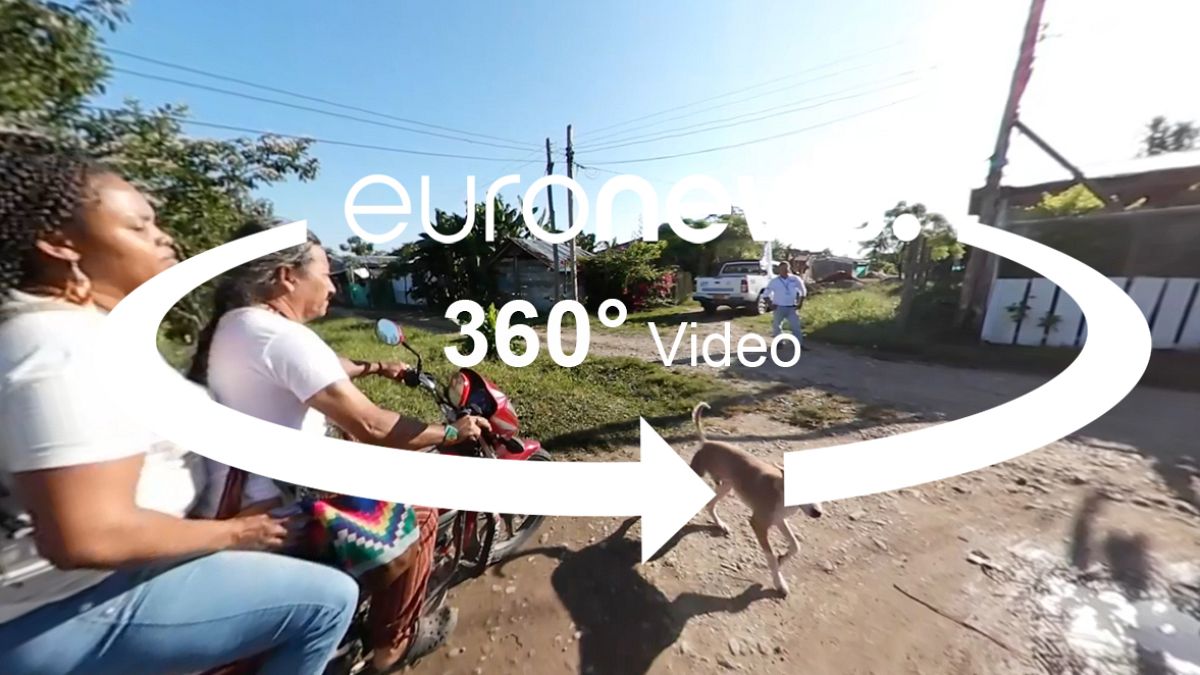In a neighborhood called ‘Centenario’, located in the outskirts of Puerto Asis, in the Colombian department of Putumayo is a district dubbed “Las invasiones” (literally “the invasions”), it is an info
In a neighborhood called ‘Centenario’, located in the outskirts of Puerto Asis, in the Colombian department of Putumayo is a district dubbed “Las invasiones” (literally “the invasions”), it is an informal district. Houses can be built from night to morning. It’s here that displaced people tend to settle after strenuous trips.
“Centenario” hosts around 260 families. Here the NGO Action against Hunger selects the most vulnerable people in need of urgent help in terms of food, shelter and hygiene. José Luis Barreiro García
Director of Action Against Hunger Colombia:
“People who live here come from this department or from the rest of the country. This kind of district allows displaced people to find protection. Usually people fleeing look for protection under anonymity in a way that nobody knows where they come from and what happened to them, as they are scared. So people here come from different places, nobody asks too much, everybody comes with a history and usually it’s a complicated one”.
Monica Pinna, euronews: “Who do these lands belong to?”
“These lands belong either to the municipality, and therefore they are public, or they belong to private owners. People move there and little-by-little they settle down. If the land belongs to a private owner, the owner usually asks the municipality to be reimbursed which turns the land into a public plot, so they become (officially) available for displaced people. If the parcel belongs to the municipality, the same thing happens. Year by year, very often these lands end up in people’s names.
These are informal districts, they have no services. No water, no electricity, no sewage system.
Monica Pinna: But we saw that some families have services and pay for them
“They pay for rent, for example, if their house belongs to a person who has arrived, say, three years ago. This person has improved his or her situation a bit and moves from a wooden house into a brick house that he was able to build. This is how he rents the former house. As here there are no official services, the electricity company put a meter box at the entrance of the community and collects the same amount of money from every family. Everyone has to pay 50,000 pesos, whether they have a shop with a fridge and several lamps, or just one one TV and a bulb, they still have to pay the same. 50,000 are the equivalent of 15-17 euros, it’s a lot of money for these people”.
People living here earn on average around 250,000 or 300,000 pesos per month, that corresponds to 80-90 euros per month.
